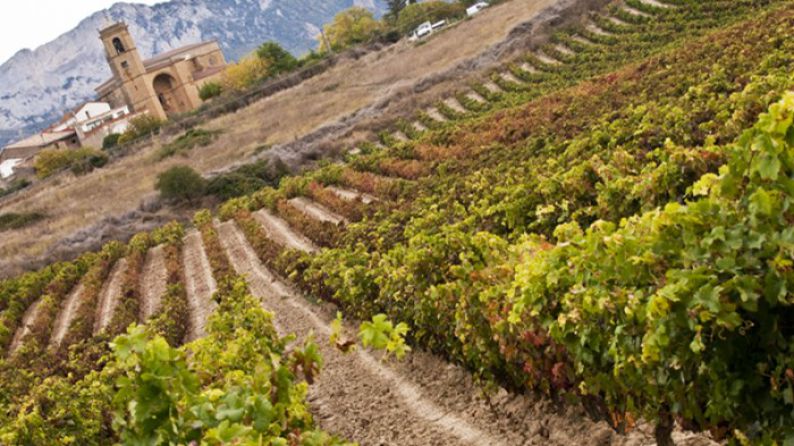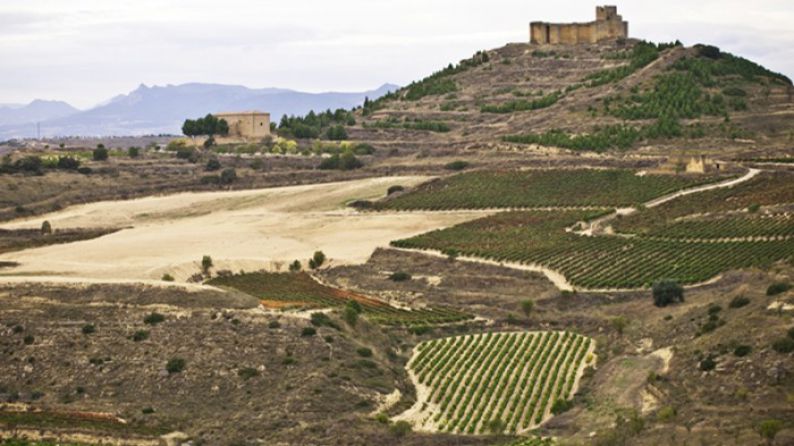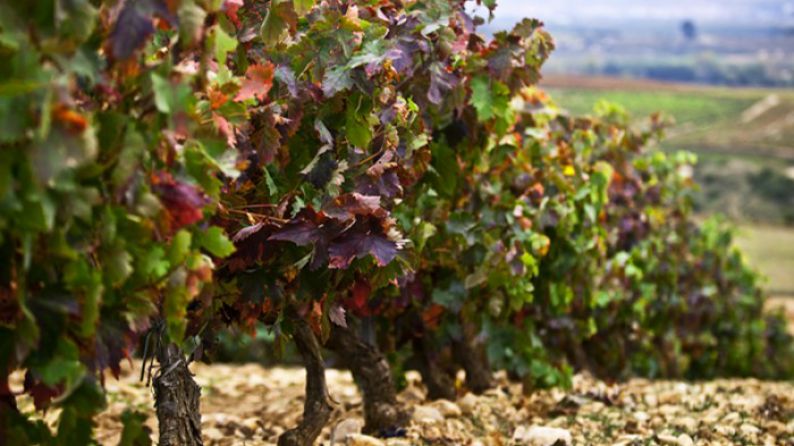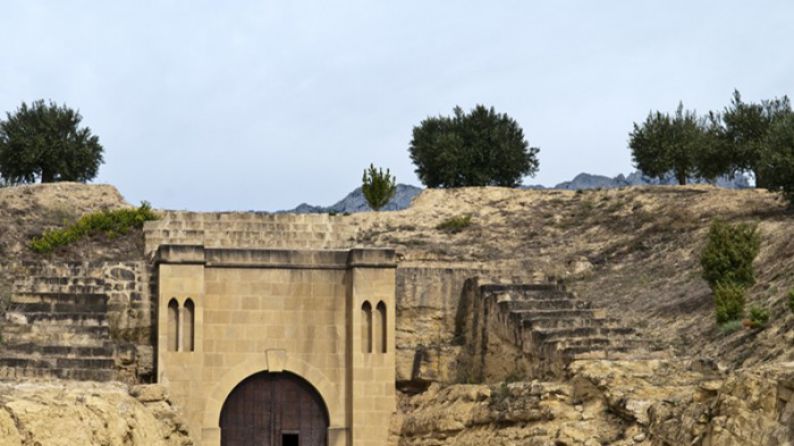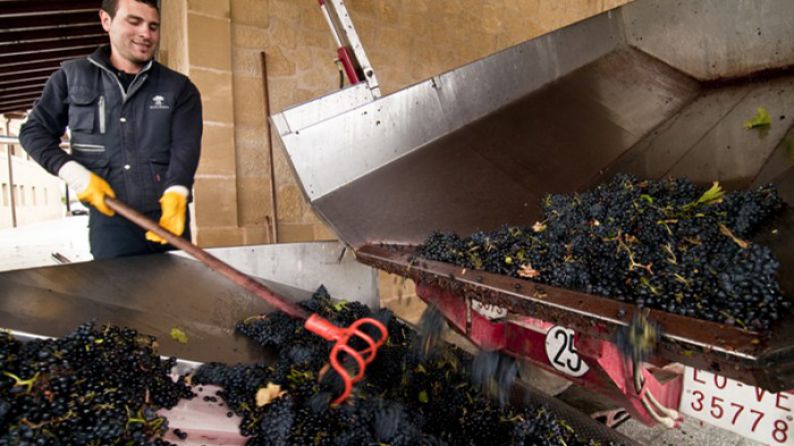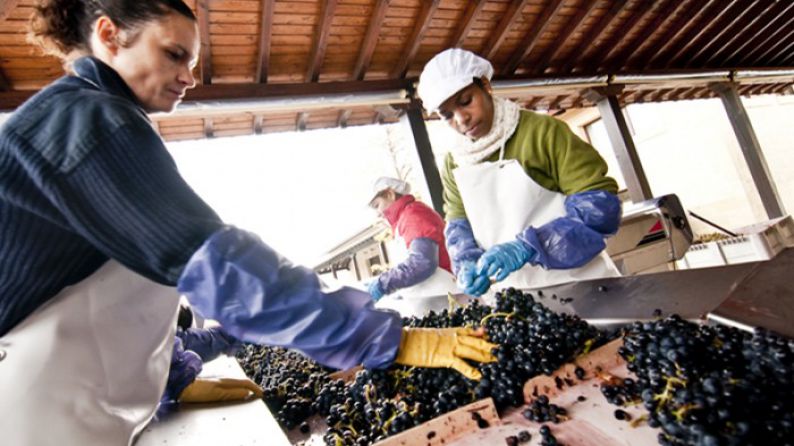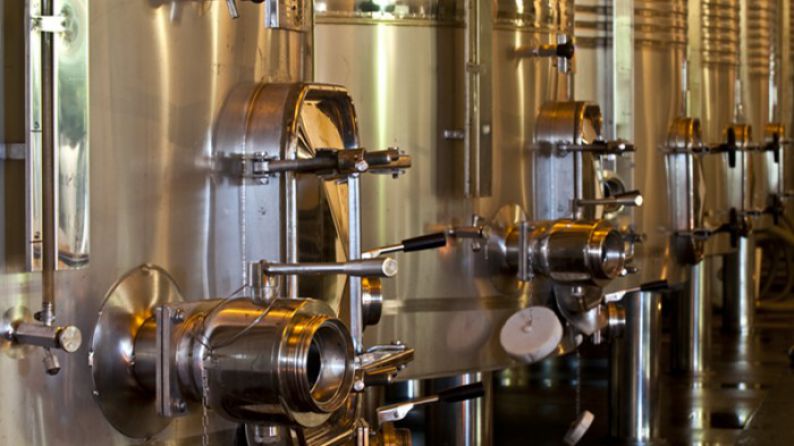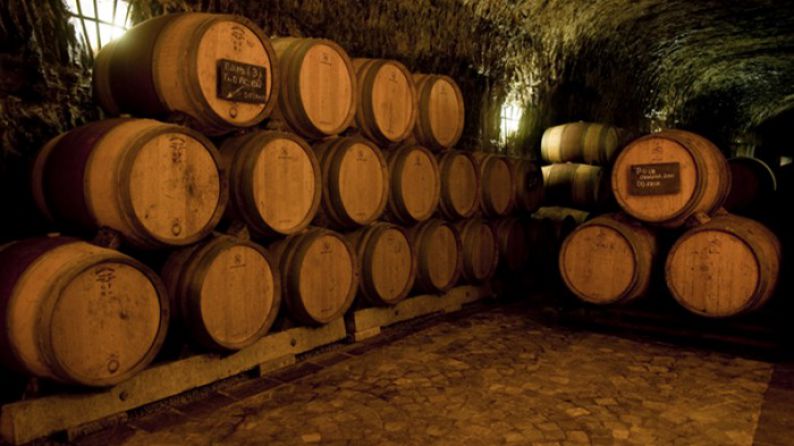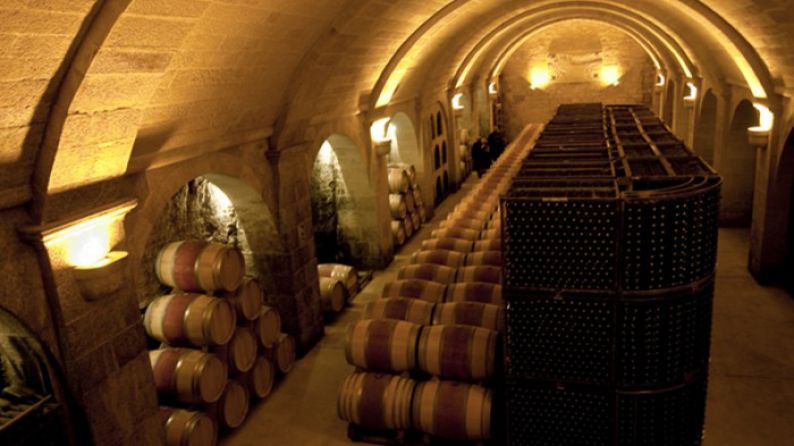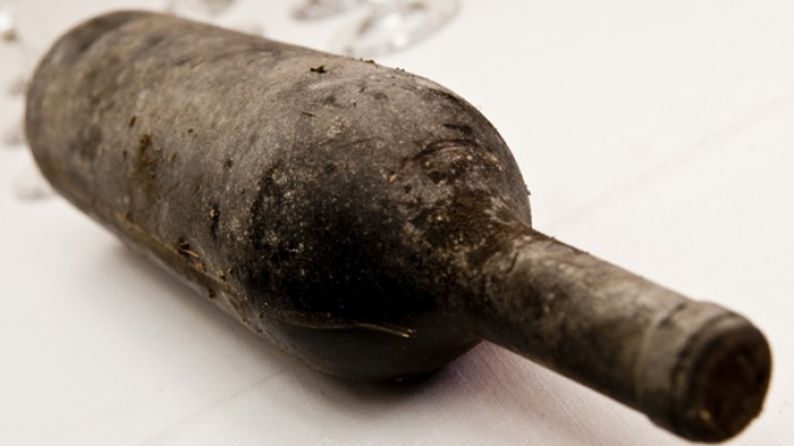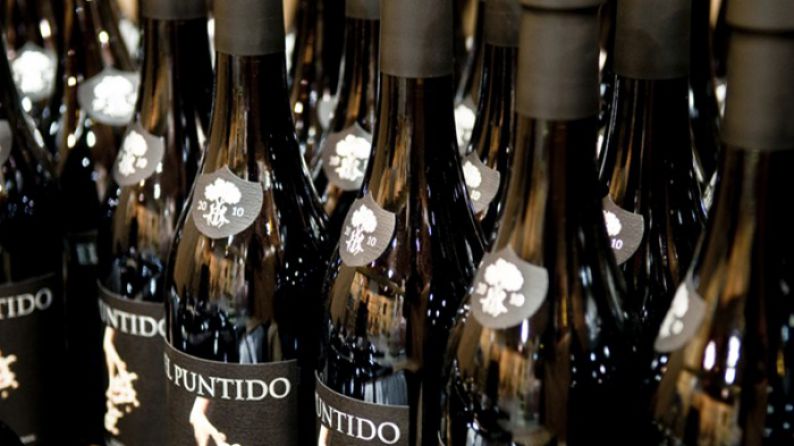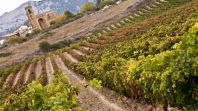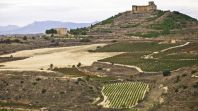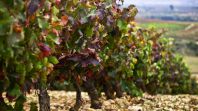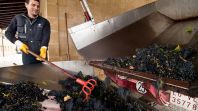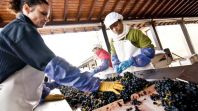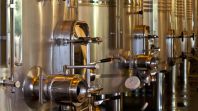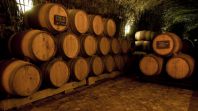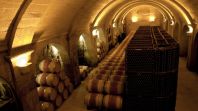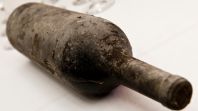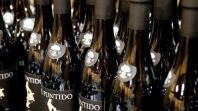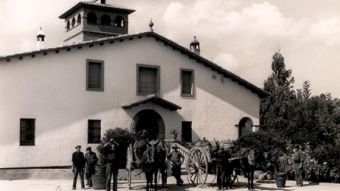The great Riojan Orchestra
From a relatively short line of winemakers (since 1870), everything this family touches turns to gold. Despite the title of this section, we cannot talk about “the” winery, because in actual fact this family has four - the luxury quartet of Sierra Cantabria, Viñedos Sierra Cantabria, Señorío de San Vicente and Viñedos de Páganos. All four wineries are the “instruments”, which perform under the baton of Marcos Eguren, who is a kind of 21st century oenological Von Karajan. The treble clef of his great performances are the vineyards, which his father insisted on buying throughout his lifetime. These are the instruments, which the offspring have learned to tune to perfection, making Eguren a great Riojan orchestra.
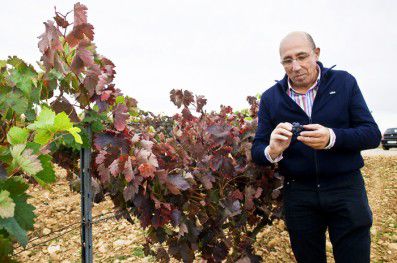 Marcos Eguren, one of the “almae matres” of the businessThe Eguren orchestra composes and performs in other wine regions in Spain, but for the purposes of this article, we will focus on its Riojan concerts which take place within a radius of a few kilometres on the left bank of the River Ebro… like that song by Uruguayan composer, Jorge Drexler, “On the other side of the river”, which won him an Oscar in 2005.
Marcos Eguren, one of the “almae matres” of the businessThe Eguren orchestra composes and performs in other wine regions in Spain, but for the purposes of this article, we will focus on its Riojan concerts which take place within a radius of a few kilometres on the left bank of the River Ebro… like that song by Uruguayan composer, Jorge Drexler, “On the other side of the river”, which won him an Oscar in 2005.
All Eguren’s vineyards and wineries are located in this small corner of the “autonomous community of La Rioja“, which quite rightly lays claim to first-rate plant matter. The rest of the left bank of the Ebro, as it flow through Rioja, is within the Basque Country and therefore part of the Rioja Alavesa.
The Eguren orchestra plays in many forums and always under the baton of the son and winemaker, Marcos Eguren, who exhibits great personality in all his performances. Although each performance sounds different, for many people, the titles of these works can be somewhat confused and confusing, creating some “discord”. Almost all are composed in San Vicente de la Sonsierra, a bucolic location at the foot of the Sierra Cantabria, but the wine drinker can easily confuse San Vicente de la Sonsierra, the village, with Sierra Cantabria, the mountain which overlooks it.
 Miguel Eguren is another important cog in “the Riojan orchestra”For example, the legal names of Eguren’s various wineries are Sierra Cantabria, Viñedos de Sierra Cantabria and Señorío de San Vicente, all three located in San Vicente de la Sonsierra. The Viñedos de Páganos winery, in Alava, in the Basque Country, gives no cause for confusion, as its location and name are clearer. Páganos has a different sound and is very Alava.
Miguel Eguren is another important cog in “the Riojan orchestra”For example, the legal names of Eguren’s various wineries are Sierra Cantabria, Viñedos de Sierra Cantabria and Señorío de San Vicente, all three located in San Vicente de la Sonsierra. The Viñedos de Páganos winery, in Alava, in the Basque Country, gives no cause for confusion, as its location and name are clearer. Páganos has a different sound and is very Alava.
But the Egurens do not seem to be concerned by this repetition of names in their brands and wineries. You might think that they would have tidied them up according to the rules of good marketing, but no! The Egurens take something special from each Tempranillo vine, however Tempranillo it might be, with the rare, almost extinct, Tempranillo peludo (furry Tempranillo) being their great “mise-en-scene”. The obsession for the parcel, the plant, the setting, the slope, the exposure, etc., makes each wine different.
Green investment
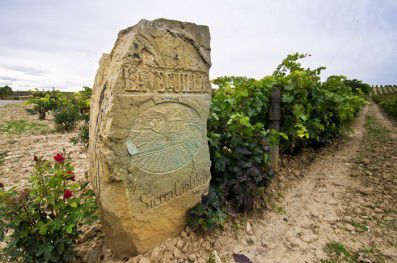 La Veguilla is one of the “components of the orchestra”This is the story of Guillermo Eguren, a Riojan wine grower, the son and grandson of wine growers born and bred. He grew up in San Vicente de la Sonsierra in a family who, unusually for the time, had already been bottling wine for local consumption for some years. Guillermo had four children, and two of them, Marcos and Miguel Ángel, are immersed in the family business 1. He insisted that his offspring were great “composers” and, instead of buying them sheet music, violins and pianos, he bought them vineyards. He built up the family’s “green heritage” of vineyards mainly within a radius of just over 20 kilometres, where they still lie today, overseeing them from the vantage point of San Vicente de la Sonsierra, where the family home is located. This is where the Egurens’ story began with the Sierra Cantabria Señorío de San Vicente bodega, in a manor house at the entrance to the village.
La Veguilla is one of the “components of the orchestra”This is the story of Guillermo Eguren, a Riojan wine grower, the son and grandson of wine growers born and bred. He grew up in San Vicente de la Sonsierra in a family who, unusually for the time, had already been bottling wine for local consumption for some years. Guillermo had four children, and two of them, Marcos and Miguel Ángel, are immersed in the family business 1. He insisted that his offspring were great “composers” and, instead of buying them sheet music, violins and pianos, he bought them vineyards. He built up the family’s “green heritage” of vineyards mainly within a radius of just over 20 kilometres, where they still lie today, overseeing them from the vantage point of San Vicente de la Sonsierra, where the family home is located. This is where the Egurens’ story began with the Sierra Cantabria Señorío de San Vicente bodega, in a manor house at the entrance to the village.
The good vineyard parcels in the Alava area were also, and are still, coveted by Don Guillermo, who was able to acquire a good number of hectares in this prized area of Rioja. You could say that the musical score, which opened the door to this great orchestra between the end of the 80’s and the early 90’s, was entitled San Vicente and its performance garnered great public acclaim.
San Vicente came out in 1991, and stood apart from the other Riojas produced at that time, when it was usual to use grapes from very productive vines from different areas of the Rioja. San Vicente was monothematic, you could think of it as a composition created for a single instrument, using raw material from a vineyard situated at 560 metres above sea level. After several years lying fallow, the land was planted with vines selected by Don Guillermo from among all those he possessed, carefully seeking out the less productive. They decided to plant the clone of the Tempranillo, the Tempranillo peludo, to a much higher density than usual, in order to obtain lower yields.
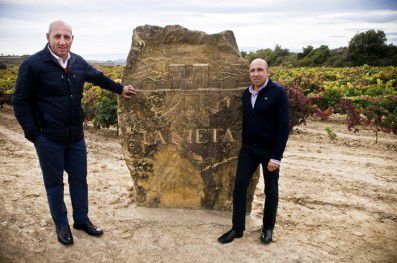 The two directors, Marcos and Miguel, Miguel and Marcos,
The two directors, Marcos and Miguel, Miguel and Marcos,
in the vineyards which gives its name to one of their most well known and sought after wines, “La Nieta”The story behind this is interesting… Marcos, having completed his oenology training and armed with the “instruments” his father had given him, was responsible for the company’s technical operations and wine-growing. He asked his father, Guillermo, to identify the less productive vines throughout their vineyards. His father probably thought that his modern son had asked him to select the “worst vines” in order to dispose of them. He followed his son’s advice and selected the vines which led to the creation of San Vicente.
San Vicente could, in fact, be considered Marcos Eguren’s second major concert, as he had previously succeeded in turning the traditional wine, which his family used to produce by carbonic maceration (now sadly less popular) into a wine of great class. It was, and still is, the appropriately named Murmurón (a wine which everyone is ‘murmuring’ about and which is the reference “carbonic maceration” wine in its market segment today). It was born in 1980, not long after young Marcos had graduated. Marcos wanted to turn the Sierra Cantabria family bodega into a “young“winery, producing good quality wine, without wood, using carefully managed carbonic maceration.
Concept investment
As well as carrying out the “green revolution“ in the vineyards, Marcos Eguren made changes to the habitual Riojan winemaking methods, doubling maceration times and carrying out malolactic fermentation in oak barrels without the skins, which was the usual thing. He introduced new French oak barrels and increased the racking. You could say that the Egurens had begun to hit their cruise speed and were really starting to fly.
They split up the wine range produced in the Sierra Cantabria family winery and created another company with practically the same name, Viñedos de Sierra Cantabria, which would group the wines according to their philosophy. From Viñedos de Sierra Cantabria come the important brands such as Amancio and Finca El Bosque, with their high prices and a production of under 5,000 bottles, the more affordable and plentiful Sierra Cantabria Cuvée, and Organza, their more recent, unusual white wine made from Viura, Malvasia and Garnacha Blanca. Another milestone for the family.
The medieval village of Laguardia sits at the foot of the Sierra de Cantabria, amid dolmens, archaeological sites, chapels and ancient medieval churches, surrounded by hectares of vineyards. These are the vineyards of El Puntido and La Nieta, two extraordinary wines with distinctive personalities. The vineyard known as El Puntido (an old word meaning ‘landing’, similar to the terrace formed between the Sierra de Cantabria and the Ebro basin), is influenced by an Atlantic climate with a hint of continental climate and is protected from the cold north winds by the Sierra de Cantabria. The soils are of a calcareous clay or clay loam texture with a high mineral content, a feature that gives the wine a unique mineral character and extraordinary personality.
La Nieta, on the other hand, is a parcel of 1.75 hectares with loam soil, poorer than that of El Puntido, and it has a completely different microclimate.
The new bodega, built from scratch with cellars carved into the rock, is a Herculean enterprise and has become the spiritual home of the Eguren orchestra, where they design and compose all the works which go on to perform in the various “auditoriums”, which are their four Riojan wineries.
“Eguren orchestra compositions”
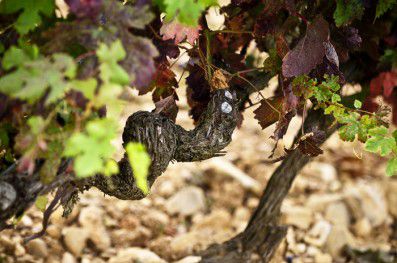 For the benefit of the reader, there follows a round-up of the wineries and brands which make up the great Eguren orchestra, which performs in its four official Rioja wineries and its two wineries outside the Rioja D.O. One of the two others, Teso La Monja, is located in the Toro D.O. and produces Alabaster, Victorino, Almirez and Teso la Monja, the family’s most expensive wine. The other winery outside the Rioja D.O. is Dominio de Eguren, which was set up for the purpose of producing good table wines to sell at affordable consumer prices.
For the benefit of the reader, there follows a round-up of the wineries and brands which make up the great Eguren orchestra, which performs in its four official Rioja wineries and its two wineries outside the Rioja D.O. One of the two others, Teso La Monja, is located in the Toro D.O. and produces Alabaster, Victorino, Almirez and Teso la Monja, the family’s most expensive wine. The other winery outside the Rioja D.O. is Dominio de Eguren, which was set up for the purpose of producing good table wines to sell at affordable consumer prices.
It is located in Páganos, in Alava, and its brands include Protocolo, Códice and Épico. The Señorío de San Vicente winery, located in San Vicente de la Sonsierra (Rioja Alta) produces only one wine, the San Vicente; and that’s it.
The Sierra Cantabria winery, founded by Guillermo Eguren in 1957, the concertina of the great orchestra, and Eguren’s starting point, is also located in San Vicente de la Sonsierra. Its wines, besides the Murmurón which we already mentioned, are branded “Sierra Cantabria” and respect the classical Rioja types - crianza, reserva and gran reserva. The Viñedos de Páganos winery, in Laguardia (Rioja Alavesa), produces the La Nieta and El Puntido brands. Last of all, there is the Viñedos Sierra Cantabria winery, which produces five brands, Amancio, El Bosque, Sierra Cantabria Colección Privada (Private Collection), Sierra Cantabria Cuvée and Organza.


